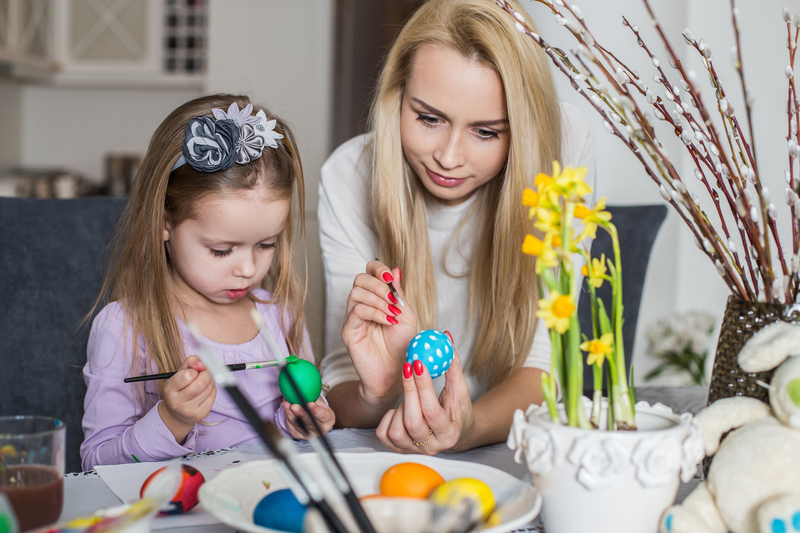From Grimy to Gleaming: Cleaning Burnt-On Stovetop Residue
Posted on 12/09/2025
From Grimy to Gleaming: Cleaning Burnt-On Stovetop Residue
Having a clean kitchen is a joy, but one area that often gets neglected is the stovetop. Burnt-on food, greasy splatters, and stubborn stains can make even a modern range look old and uncared for. If you've been wondering how to make your stovetop sparkle again, you're in the right place! In this comprehensive guide, you'll learn the most effective ways to remove burnt-on residue from your stovetop, whether it's gas, electric, or glass. We'll cover household remedies, commercial cleaners, preventative maintenance tips, and address common mistakes. Get ready to transition your cooking surface from grimy to gleaming!

Understanding Stovetop Burnt-On Residue
Before you break out your scrub brush, it helps to understand what causes burnt-on stovetop residue. Most of the stubborn grime found on cooktops results from food spills, sugar, oil, or sauces that are exposed to direct heat. Over time, these spills carbonize, forming black, rock-hard patches that resist ordinary cleaning. Knowing what you're dealing with is the first step to effective residue removal.
Why is Burnt-On Grime So Stubborn?
- High-heat exposure: Repeated heating and cooling make residue bind tightly to the cooktop's surface.
- Oils and sugars: When exposed to heat, these ingredients caramelize, creating hard, sticky patches.
- Layering: Each spill adds a new layer, worsening the problem over time.
Preparing for Stovetop Cleaning
Safety first! Turn off all burners and ensure your stovetop is completely cool before starting. Next, gather your supplies. Here's a list of essential tools for attacking burnt-on grime effectively:
- Non-abrasive scrubbing pads or sponges
- Baking soda
- White vinegar
- Dish soap with degreasing action
- Plastic scraper or old credit card
- Microfiber cloths
- Spray bottle
- Pair of gloves (to protect your hands)
Step-By-Step Guide: How to Remove Burnt-On Stovetop Residue
1. Wipe Away Loose Debris
Begin by removing any food crumbs, grease, or loose particles with a damp cloth or paper towel. This step prevents scratching while you tackle the tougher stains.
2. Soak Stubborn Spots
Mix equal parts white vinegar and water in a spray bottle. Generously spray the burnt-on patches and allow it to sit for at least 10-15 minutes. The acid in vinegar helps loosen scorched residue and dissolve sticky stains.
3. Apply Baking Soda Paste
- Pour a liberal amount of baking soda directly onto the trouble spots.
- Add a few drops of water until it forms a spreadable paste.
- Gently spread the paste over the burnt residue, ensuring full coverage.
- Let it sit for 20 minutes. Baking soda's mild abrasiveness and chemical action will break down the gunk.
4. Scrub Without Scratching
Take your non-abrasive pad, wet it in hot water, and gently scrub the area in circular motions. For really tough spots, use a plastic scraper at a shallow angle, pushing firmly but carefully to avoid damaging your stovetop's surface. Never use steel wool or metal scrapers--they can cause permanent scratches.
5. Rinse and Repeat
Use a clean, damp cloth to wipe away the baking soda residue. Inspect the stovetop. If stubborn residue remains, repeat the baking soda and vinegar soak as needed. Patience is key--multiple applications may be required for severely burnt-on messes.
6. Finish with a Shine
- Once the residue is removed, spray the surface with a household glass or stovetop cleaner.
- Buff with a dry microfiber cloth for a streak-free, gleaming finish.
Special Considerations for Different Stovetop Types
Gas Stove Burnt-On Residue Cleaning
- Remove burner grates and knobs before cleaning.
- Soak grates in hot, soapy water to loosen grease.
- Clean under and around burners carefully; avoid getting water into gas ports.
- Let all parts dry completely before reassembling.
Electric Coil Stove Cleaning Tips
- Unplug coils and carefully lift them away.
- Wipe the surface beneath the coils with a damp sponge and baking soda.
- Wipe coils, but never submerge them, as this can damage their wiring.
Glass or Ceramic Stovetop Burnt-On Residue Removal
For sleek glass cooktops, avoid abrasive methods. Instead, use baking soda paste and a soft cloth. For extremely stubborn residue, use a specialized cooktop razor scraper--held at a very shallow angle and only with lots of care.
Homemade Solutions vs. Commercial Cleaners
Natural Remedies for Cleaning Burnt-On Stovetop Grime
- Lemon Juice: The acid in lemon juice helps to dissolve burnt-on food. Squeeze fresh lemon over the spot and let it sit before scrubbing.
- Hydrogen Peroxide: For severe stains, mix with baking soda to create a fizzing reaction that can lift residue with less scrubbing.
When to Use Commercial Stovetop Cleaners
Specialty cleaners such as Bar Keepers Friend, Weiman Stovetop Cleaner, or Cerama Bryte are formulated to target tough, burnt-on stains without scratching. They often work faster but may contain chemicals--always follow label instructions and rinse thoroughly.
Preventing Stovetop Burnt-On Residue
Habits to Maintain a Gleaming Stove
- Wipe spills immediately after cooking; fresh messes are easier to clean.
- Use splatter guards when frying or cooking sauces to reduce mess.
- Give your stovetop a quick daily wipe-down with a damp cloth.
- Set a weekly deep cleaning routine with baking soda and vinegar.
Protective Accessories
- Consider silicone burner liners for electric and gas stoves. These catch spills and are dishwasher-safe.
- For glass top stoves, utilize only recommended cleaning pads to avoid scratches.
Common Cleaning Mistakes to Avoid
- Scraping with metal tools: These can permanently mar both glass and enameled surfaces.
- Using harsh powders: Products like scouring powder or strong abrasives can ruin finishes.
- Ignoring manufacturer instructions: Always consult your appliance manual for recommended cleaning methods.
- Letting residues sit: The longer a spill remains, the tougher it will be to remove.
Eco-Friendly Cleaning Alternatives
For those who prefer sustainable solutions, there are plenty of eco-friendly ways to clean a burnt-on stovetop:
- Baking soda and vinegar are biodegradable and safe for most surfaces.
- Opt for natural, plant-based dish soaps and reusable cleaning cloths.
- Use old newspaper as a polishing tool for glass cooktops--it's surprisingly effective.

Frequently Asked Questions: Cleaning Burnt-On Stovetop Residue
Can I use oven cleaner on my stovetop?
Oven cleaners can be effective, but many are too harsh for stovetops--especially glass or enameled models. Check your manufacturer's guidelines and test on a small, hidden area first.
How do I clean around the burners?
Use a small cleaning brush or an old toothbrush to gently scrub around hard-to-reach areas. Remove all detachable parts before cleaning, and ensure everything is dry before reassembly.
How often should I clean my stovetop?
To prevent burnt-on residue, wipe your stovetop daily and deep-clean at least once a week, or sooner if spills occur.
What if the burnt-on residue won't come off?
Persistent grime may require multiple methods. Soaking, scraping with a non-metal scrapper, and using a stronger commercial cleaner can all help. For severe build-up, repeated soaks with baking soda and vinegar often do the trick.
Conclusion: Enjoy Your Gleaming Stovetop!
With the right tools, a little patience, and the proper technique, cleaning burnt-on stovetop residue doesn't have to be a dreaded chore. Regular maintenance not only keeps your kitchen looking spotless but also helps your appliances last longer and function better. Whether you choose homemade remedies or commercial products, the step-by-step process is simple: soak, scrub, rinse, and polish.
For best results, always attend to spills quickly and avoid damaging cleaning methods. Now you can feel confident tackling even the grimiest stovetop cleaning challenges--transforming your cooking space from grimy to gleaming, and impressing every guest who steps foot in your kitchen!
- Ready to restore your stovetop? Bookmark this guide for quick reference any time you face stubborn, burnt-on residue.
- Share your own stovetop cleaning tips in the comments below!




